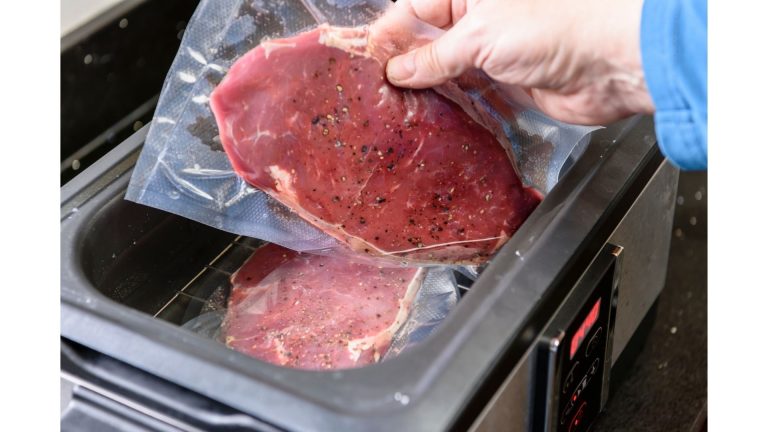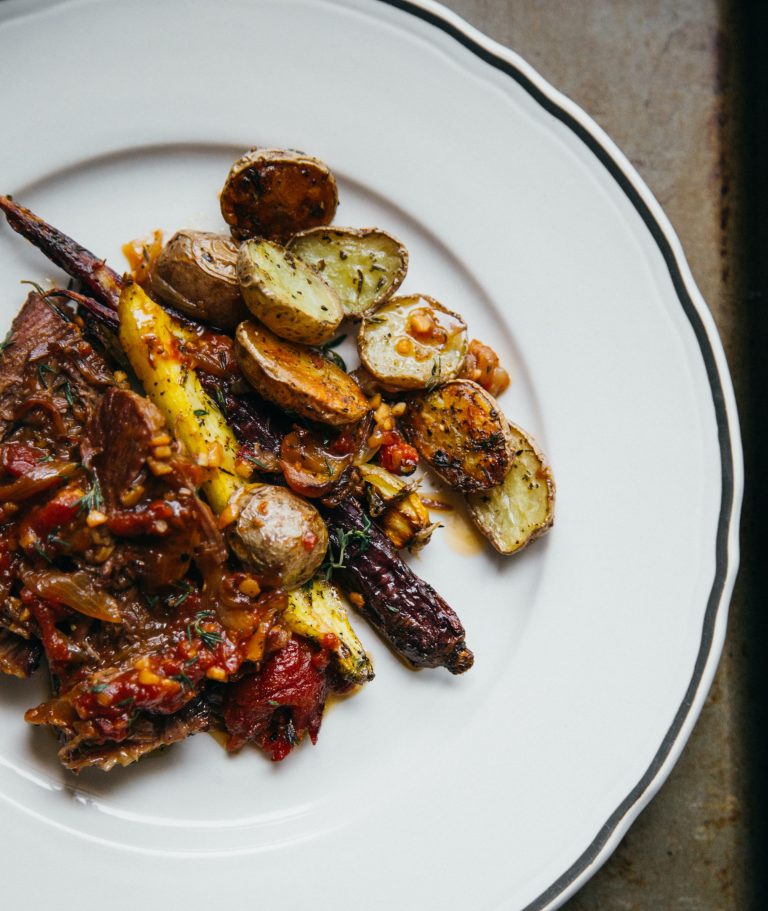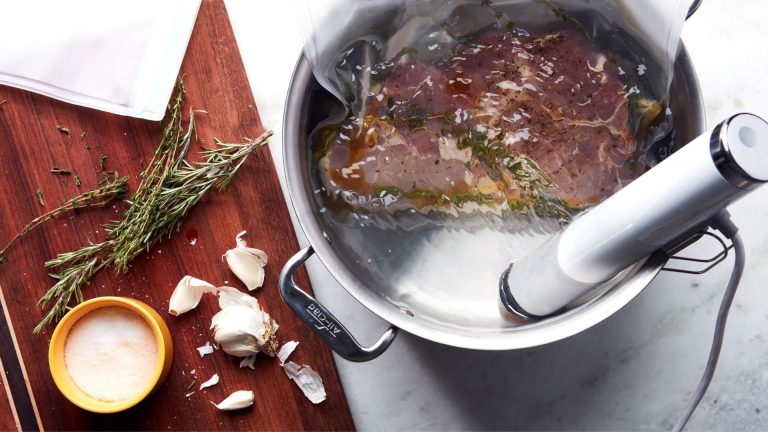What Is a Sous Vide Bag?
Sous vide cooking is all about heating the food precisely to bring out the best flavor possible without overcooking it. What matters is predictable results, and preparing great food as easily and cleanly as possible with the least amount of effort.
When you make food sous vide, you will most likely need to put the meal in a bag. Even while it’s not written in stone to use a bag, doing so makes the process considerably more effective and convenient overall.
As a result, if you’re cooking sous vide, the type of bag you choose will have a significant impact on the outcome of your meal.
The bag is really important, and that’s why in this post, we will go over everything you need to know about sous vide bags, right from what they are to practical tips on how to use them effectively. So keep reading.
Table of Contents
What Are Sous Vide Bags?
Sous vide bag is any kind of packaging that you cooks use to put food in while using sous vide methods.
Sous vide cooking involves putting the food in a water bath and then heating the water to cook the food in a controlled manner. To put the food in water, we need to use some kind of packaging as we can’t directly put food in the water.
So what we do is to put our food in a bag, seal it properly and then put it in water.
Reasons We Need a Sous Vide Bag
Sous vide cooking uses water as the medium to transfer heat to food. That’s because transferring heat to food from water is several times more effective as compared to doing it from the air.
And to place the food in water, we use sous vide bags. But why? Here are the reasons:
1. So that water doesn’t touch food
If we place food directly into the water without using any kind of packaging, then it will be equivalent to boiling the food and this is not a sous-vide method.
In sous vide method, we use water only as a medium of heat transfer and water should not touch the food at all. This is because if water touches the food, then it will leech its flavors and juices.
Thus its important to put food in packaging before placing it in the water bath.
See also: What Happens if Water Touches the Food in Sous Vide?
2. Packaging increase the surface area for heating
In sous vide cooking, we need to transfer heat from water to food. The water should not directly touch the food, but the more of the surface area of food will come in contact with water, the more effective heat transfer will happen.
Putting the food in a bag allows us to easily achieve this.
3. Easily vacuum sealable
Bags are really easy to vacuum seal. This helps us to remove all the air from within the bag.
If there is no air between food within the plastic and the surface of the bag, then food receives heat from the water much more effectively.
See also: Best Vacuum Sealers for Sous Vide Cooking
Types of Packaging for Sous Vide
There are several types of packaging that you can use while preparing food sous to vide. Here is a list of the best and the most easily accessible ones:
1. Ziplock bags
Ziplock bags are a practical and widely used technique of packaging ingredients during sous vide cooking. They are low-cost, BPA-free alternatives that are readily available in most supermarkets.
Their versatility allows them to be used for just about everything that can be cooked sous vide, from scrambled eggs to meats, seafood, and vegetables.
The drawbacks include a lack of durability when used with bone-in meats or large portions, and are not ideal when you need to cook for longer periods at higher temperatures.
You may, however, prepare for these situations by using two bags for packaging.
2. Vacuum sealer bags
In commercial kitchens, vacuum-sealed bags are quite popular. They are extremely durable and may be used to enhance the shelf life of the food.
They make it simple to use a machine to extract the maximum amount of air from a box. However, it’s not necessary to seal using a machine in order to use them. Instead, you can use a clip to seal the top of the bag or use a lid to hold it in place.
They are ideal for solid food products as well as meals that have protruding bones in them.
3. Silicone bags
Silicone bags or pouches are the most recent additions to the sous vide industry. They combine the convenience of the use of zip-lock bags with the powerful strength of vacuum sealing bags to provide a convenient solution.
They are extremely durable, can be re-used thousands of times, are dishwasher and freezer safe, are odour and stain resistant, and are an excellent non plastic alternative.
It is advised that you cook for an additional 5 minutes because they are thick.
4. Glass Jars
Glass canning jars are another excellent choice for sous vide packing, especially for recipes that begin in a liquid state, such as eggs, yoghurt, custard, and the like. Smaller jars having two part lids are ideal for sous vide cooking.
They are handy, easy to find, long-lasting, reusable, dishwasher and freezer safe, odour and stain resistant, and a fantastic non plastic alternative. In addition, there is no need to bother about removing air, as there is with bags.
They are, however, not particularly suitable for cooking meat or fish.
See also: Are Sous Vide Bags Reusable?
Final words
When it comes to packing food for sous vide cooking, there is definitely a lot to consider. Using vacuum sealer bags is a no-brainer when it comes to this task.
You may also use ziplock bags if you are concerned about the cost, which is suitable for the majority of situations. This type of bag is an excellent and inexpensive alternative, but be cautious while using it in extreme temperatures.
If you don’t want to spend the money on a vacuum sealer right now and also want to save on plastic, silicone bags are a good alternative. And, in some instances, you may certainly use jars, which is really practical in terms of storage.
So that’s all we have to say. We leave with the hope that this guide on sous vide cooking food packaging was useful to you.

Foodie and a passionate cook, I am here to share all of what I know about cooking, kitchen, and food prepping.
Follow me for delicious and healthy recipes.







